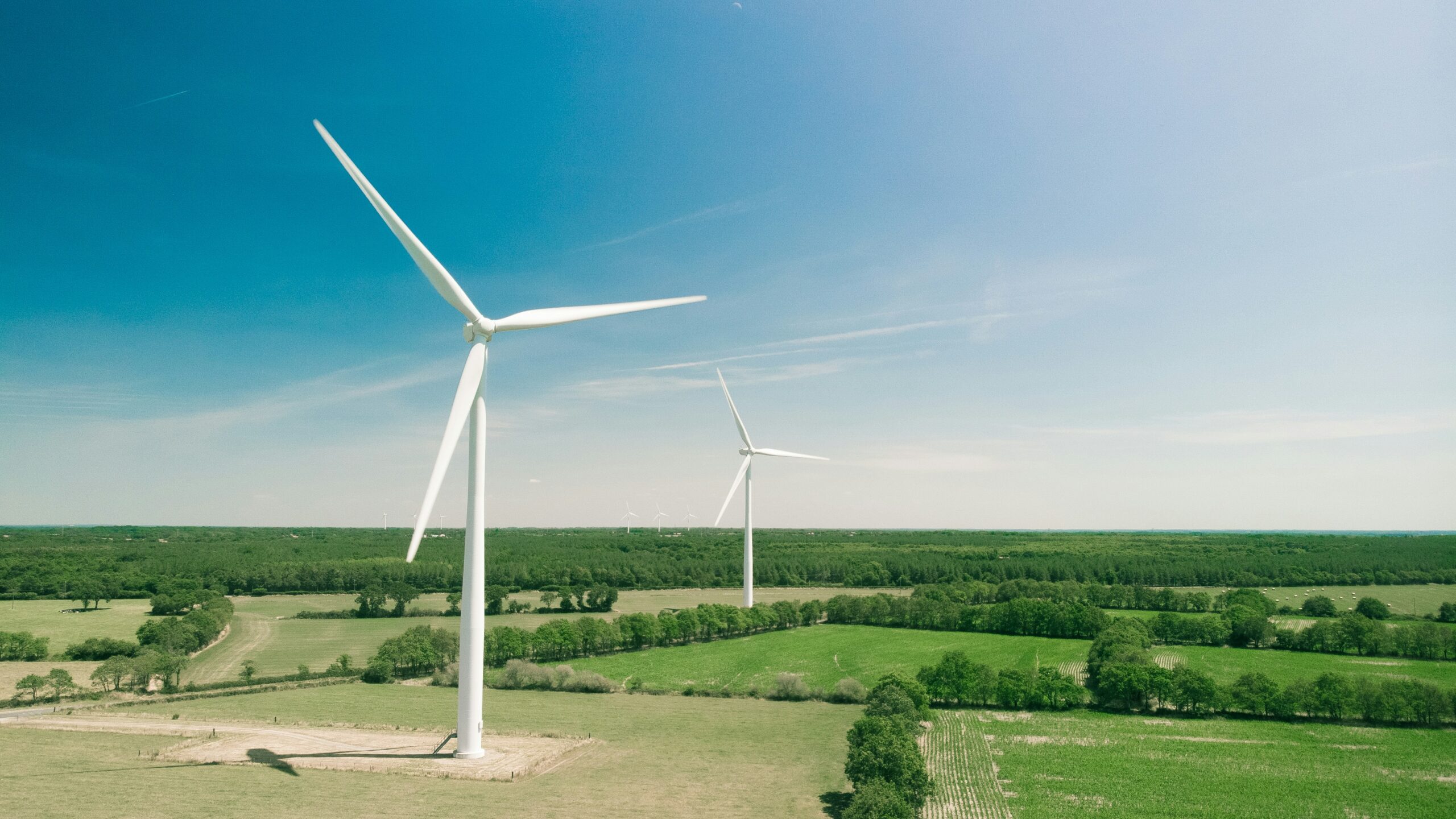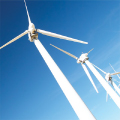What Is Wind Powered Hydrogen Production?

What is wind powered hydrogen production, and its associated benefits.
The reality of surplus energy
Love them or hate them, wind turbines are everywhere.
Whether you’re in the middle of a town, driving down the motorway, gazing upon a rural landscape or looking out to sea, you’re never too far from the white towers of eco-friendly power generation.
However, you feel about them, one thing is for sure: you can be assured that they’re majestically generating clean, renewable energy to help power our electricity-hungry society without jeopardising the world climate. Right?
The unfortunate reality is that these turbines are a little too effective.
They often generate more power than the electricity grid can handle, especially in times of high wind, meaning the wind farms are instructed to reduce or even halt energy production altogether.
This is referred to as “curtailment”.
The knock on effect of this curtailment is where it starts to get personal, as payments are made by the National Grid to energy generators to compensate for the lost production; these were worth in the order of £300 million in 2023.
These costs are then passed over to consumers, in the form of increased electricity prices which have cost over £2 billion since 2021.
What’s more, with offshore wind capacity increasing from 14 GW to meet the 50 GW 2030 target, curtailment costs are projected to increase fivefold during the same timescale, wasting the equivalent power consumption of 5 million households.
The obvious solution is to improve electricity grid infrastructure and energy storage assets, increasing the amount of electricity that can be handled and reducing the need for curtailment.
These are long-term solutions which are projected to be outpaced by further power generation development.
There is another solution, however, which will facilitate green energy usage and reduce dependence on fossil fuels: wind powered hydrogen production.
The Wind Powered Hydrogen Production Concept
The process of producing hydrogen involves electrolysis of water in order to split the hydrogen molecules from oxygen molecules.
The hydrogen is then stored for later use as a liquid or gas, in tanks or even underground caverns.
While effective, this process requires vast amounts of electricity, which exceeds the potential energy of the hydrogen itself, resulting in an efficiency of less than 70%.
This isn’t great news for proponents of hydrogen use, however, the new wind powered hydrogen production concept may turn this around.
The idea is simple: use the surplus energy generated by wind farms to power the electrolysis process, resulting in “green hydrogen”.
Theoretical modelling suggests that using curtailed wind energy could produce significant amounts of green hydrogen, replacing the existing, carbon-intensive hydrogen consumption.
This would help to decarbonise heavy industries such as steel manufacturing, and also contribute toward sustainable fuel targets.
Proving the Concept
The idea of wind powered hydrogen production is more than merely notes on a sketchpad at this point.
The concept is being put into practice in Østerild, Denmark, where a 2.5MW wind turbine is used to directly power a 1 MW electrolyser to produce hydrogen.
The linking of wind power to hydrogen production is also being planned in the UK, Germany, and Japan.
The solution is not completely perfect, there are some inevitable hurdles to cross:
Intermittent Energy Source
When the wind drops, an alternative source of power for the electrolyser must be sought – most likely power from the grid, or another robust energy storage solution.
Using power from the grid increases the total round-trip carbon footprint of hydrogen power, thus reducing the net benefit from using hydrogen over existing fuel sources.
Hydrogen storage and transport
Hydrogen needs a significant volume for storage; it must also be stored under pressure and at very cold temperatures (-252.8°C) when in liquid state to prevent boil off.
Wind powered hydrogen production will increase the requirement for this storage, meaning a supporting infrastructure for this purpose will need to be built and maintained.
The cost of wind powered hydrogen production
This is greater than conventional methods of using steam reforming from natural gas and is affected by turbine location, turbine size and technology, and electrolyser efficiency.
The cost of producing hydrogen using curtailed wind power can be expected to fall, however, assuming advancements in turbine and electrolyser technology, as well as economies of scale as the green hydrogen sector grows.
Wind powered hydrogen production project timelines and costs
These could increase should the concept become adopted on a wider scale, due to shortages of electrolysers and other critical components as well as adaptation of existing infrastructure such as natural gas pipelines.
Other factors that can delay a wind powered hydrogen project include obtaining permits and navigating environmental regulations, protracted public consultation meetings, securing financial support, and issues with supply of critical turbine and electrolyser infrastructure.
Who will take the lead?
A chicken-or-egg problem exists in that early adopters are discouraged from investing in such hydrogen production projects due to the lack of end user buy-in.
However, potential end-users are reluctant to build handling infrastructure and structure, and adopt hydrogen technology, until a reliable and cost effective hydrogen fuel supply is available.
This may be circumvented with the encouragement of regulatory policy development and market reforms which would enable innovative market participants to invest curtailment costs into electrolyser and hydrogen capacity.
While current focus for such reforms is in Scotland, where a large proportion of wind curtailment occurs, the reforms could benefit the entire UK.
As the UK aims for 95% of power generation from low-carbon sources by 2030, these reforms are crucial, particularly as hydrogen fuel and power plays an instrumental role in achieving this target.
A Promising Solution
Few things in life are ever certain, however, one thing we can count on is needing a reliable source of power that doesn’t destroy the immediate natural ecology or contribute toward degradation of the global environment.
Our current dependence on fossil fuels may be reduced through application of hydrogen powered vehicles and progressive steps forward such as wind powered hydrogen production will help make this more feasible.


